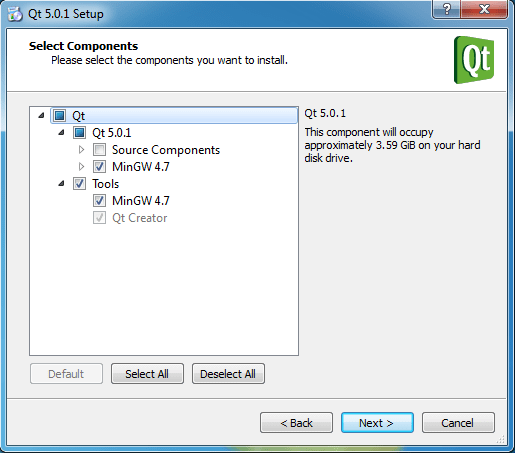

- #INSTALL PYQT5 CENTOS 7 HOW TO#
- #INSTALL PYQT5 CENTOS 7 INSTALL#
- #INSTALL PYQT5 CENTOS 7 DRIVER#
- #INSTALL PYQT5 CENTOS 7 32 BIT#
- #INSTALL PYQT5 CENTOS 7 CODE#
import sysįrom PyQt5.QtWidgets import QApplication, QMainWindow So we create another program in the same directory called “main.py”, And enter the following, take Ui_untitled Instead, you generate. Try running the just generated “Ui_mainus.py” It is no use, Because the generated file has no program entry. Right click to select the ui file, choice PYQT:Compile Form, Generate a python file Open QT Designer, And create a form to save ui file, return Vscode In file management, Right click in the blank to select PYQT:New Form Create a form įind QT designer After path, Copy and configure in pyqt integration in
#INSTALL PYQT5 CENTOS 7 INSTALL#
Here is a Qt designer The problem of path setting, Because we didn't install it separately Qt designer, install PyQt5-tools It's already installed when it's finished Qt designer 了, The path of each computer is different, So it's difficult to find it at first, It is recommended to use Linux find Command to locate the location of the relevant file.
#INSTALL PYQT5 CENTOS 7 HOW TO#
In general, this method is relatively slow in the domestic environment, You may be prompted that the installation failed, Domestic installation source is recommended here ( douban ) How to solve : It is recommended to use a more secure installation method.
#INSTALL PYQT5 CENTOS 7 CODE#
Because it automatically depends on your Python Version to choose the right PyQt5 edition, If you download the source code manually, install it, It's hard to avoid making mistakes. PyQt5 There are two ways to install, One is to download and install the source code from the official website, The other is to use pip install. There's nothing to say about this part, There are lots of tutorials on the Internet, Just follow the picture. 1 root root 524464 libGLU.so.1.3.Recently ready to learn Python GUI, In addition to writing the code implementation, At present, it is estimated that the quickest way is PyQt 了, In the process of configuring the environment, The online tutorials are all based on Windows Of, It's also based on Ubuntu Of, But never found CentOS Tutorial under, A lot of detours, After groping, It's finally done. Check the box to add all of the PyQt5 extras. Next you want to install a Python version 3.3 or newer. First use the installer from the qt-project website, from qt to install PyQt. 1 root root 32920 Sep 25 10:31 libGLESv2.so.2.0.0 To install PyQt on Windows there are a few steps you need to take. LibGL.so.346.47: ELF 32-bit LSB shared object, Intel 80386, version 1 (SYSV), dynamically linked, stripped LibGL.so.1: symbolic link to `libGL.so.346.47' LibGL.la: libtool library file, ASCII text LibGLESv2.so.346.47: ELF 32-bit LSB shared object, Intel 80386, version 1 (SYSV), dynamically linked, stripped LibGLESv1_CM.so.1: symbolic link to libGLESv1_CM.so.346.47' $ file libGLESv1_CM.so.346.47 libGLESv1_CM.so.346.47: ELF 32-bit LSB shared object, Intel 80386, version 1 (SYSV), dynamically linked, stripped $ file libGLESv1_CM.so.346.47 libGLESv1_CM.so.346.47: ELF 32-bit LSB shared object, Intel 80386, version 1 (SYSV), dynamically linked, stripped $ file libGLESv2.so.2 libGLESv2.so.2: symbolic link tolibGLESv2.so.346.47' Would the 64bit libGL be called something else? All of these seem to be 32bit. 1 root root 10 Mar 18 13:56 libGL.so -> libGL.so.1 1 root root 14 Feb 28 13:38 libGLESv2.so -> libGLESv2.so.2 1 root root 17 Feb 28 13:38 libGLESv1_CM.so -> libGLESv1_CM.so.1
#INSTALL PYQT5 CENTOS 7 DRIVER#
Start of section headers: 1111752 (bytes into file)īut I think the problem is the nvidia driver (which I also installed 64 bit) and it asked me during installation if i wanted to also install the 32bit binaries which i said yes. Start of program headers: 52 (bytes into file)

#INSTALL PYQT5 CENTOS 7 32 BIT#
The best I can tell they are 32 bit targets? Do appreciate your patients in helping me, I am very new to linux.


 0 kommentar(er)
0 kommentar(er)
